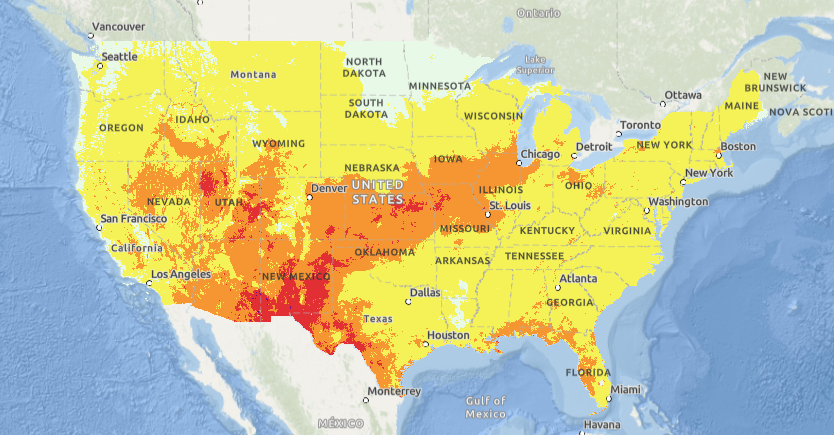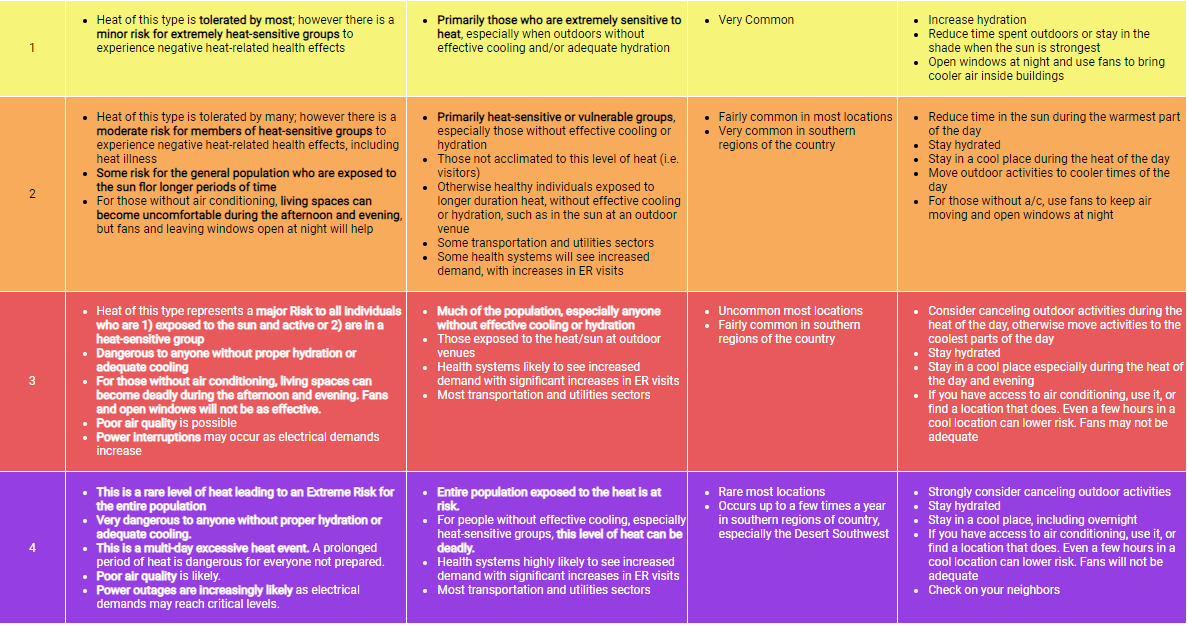The NWS rolled out a new heat tool just in time for summer
Written by Meteorologist Mary Wasson
Last updated 6/13/2024, 1:58:01 AM
This summer the National Weather Service and the Center for Disease Control have launched a new Heat and Health Initiative to protect Americans from heat exposure.
The new measurement is called HeatRisk, and it’s an experimental color-numeric-based index that provides a 7-day heat forecast that tells you when temperatures may reach a level that could harm your health.

HeatRisk takes into consideration:
- How unusual the heat is for the time of the year
- The duration of the heat including both daytime and nighttime temperatures
- If those temperatures pose an elevated risk of heat-related impacts based on data from the CDC
This new measurement will serve as another NWS tool that can be used to protect lives from potential risks of excessive heat. It has proved useful in the Western United States since its launch there in 2014. This year it was expanded across the contiguous United States and has already made a difference with the extreme heat in Texas and the Desert Southwest the last few weeks.
According to the CDC, more than two-thirds of Americans were under heat alerts in 2023, becoming more frequent and intense. A recent report from the CDC found that daily emergency department visits because of heat-related illness in 2023 peaked in several regions over the warm-season months and, in those regions, remained exceedingly high for an extended duration.
Extreme heat has a disproportionate impact on specific groups, heightening their susceptibility to heat-related illness and adverse effects.
Some of these groups include:
- The elderly and the very young
- People experiencing homelessness
- Those on certain medications and those with pre-existing conditions that make them more sensitive to heat
- Those working outdoors -- especially new workers, temporary workers, or those returning to work after a week or more off, along with workers working indoors in a non-cooled space
- Those exercising or doing strenuous activities outdoors during the heat of the day - especially those not used to the level of heat expected, those who are not drinking enough fluids, or those new to that type of activity
- Those without a reliable source of cooling and hydration - this includes otherwise healthy individuals who are attending outdoor activities and are exposed to the heat and may not recognize the early symptoms of heat stress
- Those not acclimated to the level of heat expected - especially those who are new to a much warmer climate
- Those sensitive to poor air quality, which can be exacerbated by heat waves
- Those living in low-income communities
- Some economic sectors are also affected by increasing levels of heat, such as energy and transportation
When you are faced with extreme heat, be sure to stay safe and recognize the signs of heat illness.
1. Stay cool: Stay indoors in an air-conditioned space, or use a fan. You can also take cool showers or baths, keep your skin wet with a damp sponge or spray bottle, or wear light-colored, loose-fitting clothing. Light colors reflect heat and sunlight, which helps maintain your body temperature.
2. Stay hydrated: Drink plenty of water before you feel thirsty, especially if you're outdoors or active. You can start with 16 ounces before you start working, and then drink 5–7 ounces every 15–20 minutes. Avoid dehydrating drinks like caffeinated beverages and alcohol.
3. Protect your skin: Wear sunscreen and a wide-brimmed hat to protect your face from the sun.
4. Pace yourself: Avoid strenuous activity and schedule frequent breaks. If you're working outdoors, take time to acclimatize.
5. Be aware of signs of heat illness: Look out for heavy sweating, painful muscle cramps, nausea or vomiting, dizziness or headache, fast and weak pulse, or fainting.
